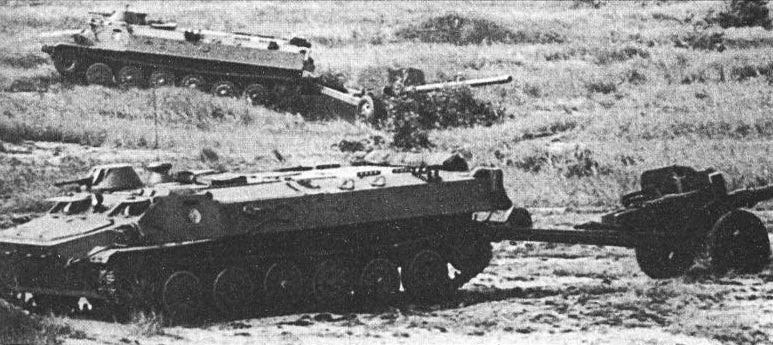I Bought a Tank
Or how to haul a Soviet recon vehicle from Belarus to Moscow in one piece
by ROBERT BECKHUSEN
Belarus has tons of Soviet military equipment sitting around that’s unneeded, obsolete or otherwise depreciating in value by the day.
Aluminum jars, uniforms, gas masks, night-vision goggles from the 1970s. There are UAZ utility vehicles. Armored ditch diggers, et cetera. The Belarusian Ministry of Defense sells all of these items on its website. In a part of the world where armies are recirculating old hardware for new conflicts, Belarusian military surplus stands out as relatively cheap.
In 2014, Tim Jackson, a Moscow blogger with an interest in armored vehicles, went shopping for tanks—only to find used Russian military vehicles shoot up in price, likely due to demand from vehicle-hungry separatists fighting in Ukraine.
So Jackson took advantage of the Belarusian bargains and bought a BRDM-2 direct from the Belarusian army. He blogged about the laborious process of negotiating the sale and transporting the vehicle back to Russia. At one point, a garbage truck driver volunteered to drag it through the streets of Moscow.
The BRDM-2 is a 140-horsepower armored reconnaissance vehicle dating to the 1960s. It has a curved, watertight hull for crossing rivers and channels. “It’s very simple, just like a usual car,” Jackson said. “It has four gears up forward, and one rear. It has a drive to climb down hills, and it can swim.”
Buying one is complicated and will take a few days, but Jackson’s example is that you, too, can own a rusty piece of Soviet military hardware. At least, you might have done so … in 2014.
Most of the time is just filling out paperwork. Foreign buyers must contact the Belarusian State Security Committee—or KGB—at least two weeks in advance. The buyer must also contact the state-owned surplus company BelSpetzContract, which hands out visitor permits to army bases.
After securing a permit, all you have to do is visit the base of your choice, inspect the equipment you want to buy, and simply contact BelSpetzContract again to receive an invoice and complete the sale.
For Jackson, the trouble was coming up with the 100 million Belarusian rubles, or about $10,000—in paper currency. “Credit card and currency exchange limits can seriously mess with your plans, but that’s not even the biggest problem,” he blogged.
To pay in credit requires having an account in a Belarusian bank, and Jackson didn’t have one. The largest paper note in the country is only for 200,000 rubles, which added up to several very fat stacks of cash.
Cash in hand, he showed up to the base and—presto—Jackson became the proud owner of a seven-ton BRDM complete with a leftover DShK heavy machine gun belt. The bad condition of the vehicle meant that driving it to Moscow “flew out of the window immediately.” So he hired a semi-trailer driver for the 24-hour return trip.
He deflated the BRDM’s tires to prevent the added weight from flipping the trailer.
Then there’s dealing with the police.
“On the way we were stopped four times,” he wrote. “We were only asked to show proper documentation on the fourth stop, all others were limited to shocked questions ‘What the Hell kinda tank is this?!’”
Once back in Moscow, he recruited a garbage truck driver to cable-tie the vehicle and haul it the rest of the way—to his dacha.
Yes, he took video while riding through Moscow on a garbage truck-hauled BRDM—and yes, this was illegal. But he made it home without alerting the police.
“It drives, and the engine is pretty okay,” he said. “But it still needs a lot of repairs.”
He wanted to add armored windows, and the interior needed some work. Jackson was looking for sponsors who could help pay to refurbish the vehicle in exchange for ad space “applied onto the armor of this beast.”
Once that was done, he said he wanted to take it on an off-road trip—sans heavy machine gun—and blog about it the whole way.
Read more:
Russia Is Burning Through One Of Its Last Stocks of Old Cold War Vehicles
The 17-ton, eight-person MT-LBu is a Soviet-designed amphibious tractor that is almost always unarmed in its myriad versions, unlike the smaller MT-LB tractor that preceded it into service by a few years. Both vehicles have no more than 10 millimeters of armor—barely enough to stop small-arms fire.







